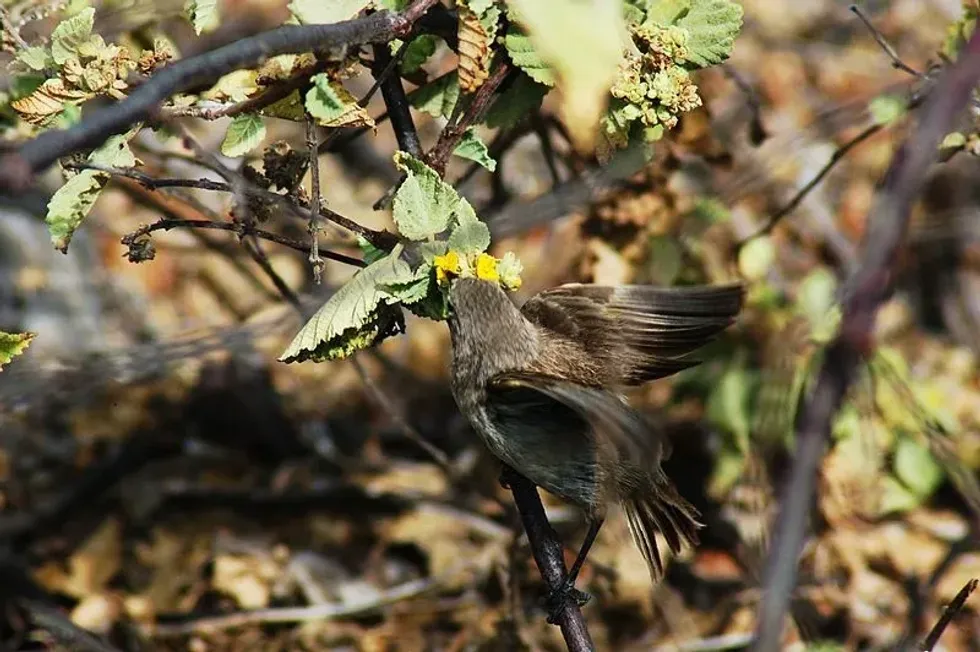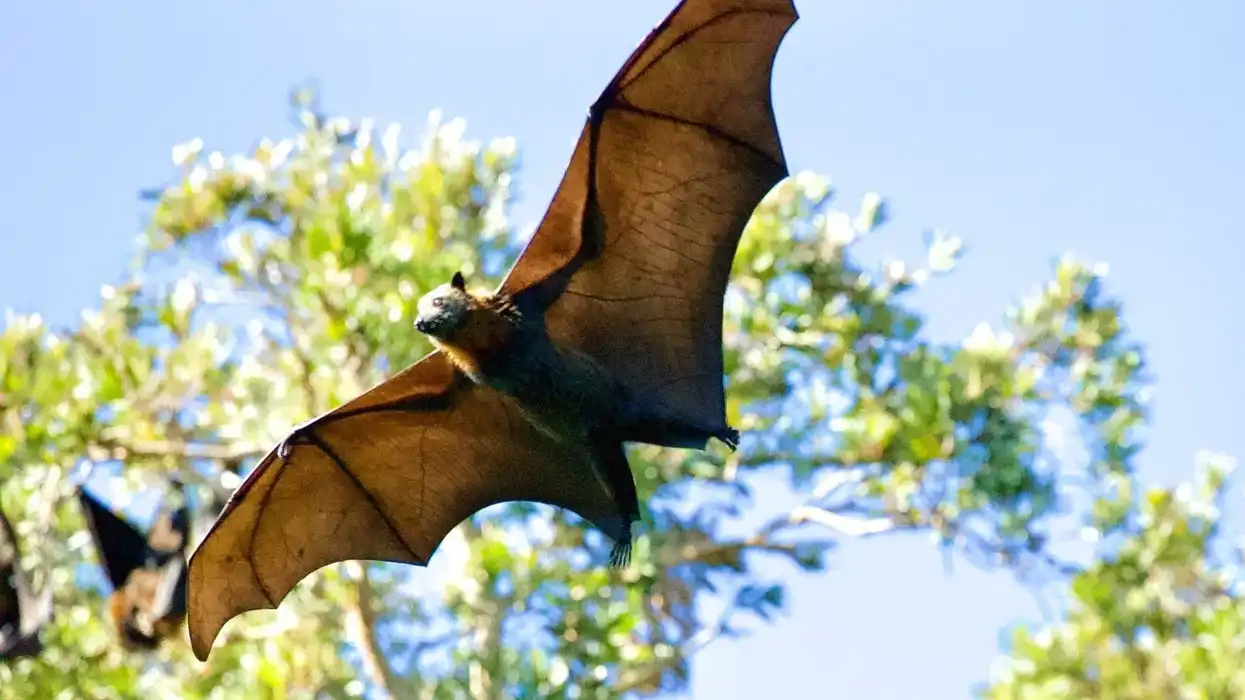The vampire finch (Geospiza difficilis septentrionalis) is one of the 15 species of finches found on the Galapagos Archipelago. This bird got its name from the blood-consuming vampire bats.
Charles Darwin was the first to observe the peculiar nature of these birds feeding on the blood of the victims such as the blue-footed and Nazca boobies. These birds along with the other finches are cumulatively called Darwin's finches.
The vampire finch is one of the most unique species of birds and their evolution only goes to show how far animals can evolve in an effort to survive the harsh conditions of the habitats they live in! Conservation efforts to protect the population of these birds will surely help in them not becoming extinct.
If you liked these true facts about the vampire finch, then you'll surely like these facts about the dodo and the quail too!
Vampire Finch Interesting Facts
What type of animal is a vampire finch?
The vampire finch (Geospiza difficilis septentrionalis), belongs to the breed of the finch birds and is one of the small black and gray breeds. They have black feet and yellowish bills.
This bird is known for feeding on the blood of seabirds such as the blue-footed and Nazca boobies, and this unique feature separates them from other species of finches.
What class of animal does a vampire finch belong to?
Vampire finches belong to the Aves class of animals. The Aves class consists solely of birds and belongs to the family of Ardeidae. Birds are known to be warm-blooded vertebrates that are characterized by their feathers, laying of hard-shelled eggs, toothless beaked jaws, a four-chambered heart, and a lightweight yet strong skeleton.
How many vampire finches are there in the world?
The total population of vampire finch around the world is less than 1,000 individuals with all of them spread across the two islands of the Galapagos Archipelago.
Where does a vampire finch live?
The vampire finch (Geospiza difficilis septentrionalis) is found to thrive near the volcanic islands of the Galapagos Archipelago. This belt is a series of islands along the equator in the Pacific Ocean, Their population distribution is limited to regions of Darwin Island and Wolf Island.
What is a vampire finch's habitat?
The vampire finch is found near the equator in the Pacific Ocean native to the Galapagos Islands, which is situated in the west of Continental Ecuador. The favorable vampire finch habitat is a deciduous forest with open areas and low-growing vegetation on Darwin and Wolf Islands.
Who does a vampire finch live with?
The vampire finch is a social bird and is often seen feeding in groups. This bird is monogamous in nature and lives with a single mate throughout its entire life. The male vampire finches are extremely territorial and will guard their nesting territory from other species.
How long does a vampire finch live?
The vampire finch has a lifespan of up to 10 years in the wild due to a lack of natural predators on their native islands.
How do they reproduce?
Vampire finches are monogamous pairs and build their dome-shaped nests in cactus plants and bushes. Their breeding season starts in the rainy season, males participate in a ritual to attract a female and then females will lay two or three eggs in the nest.
The incubation period of vampire finches is about 14-15 days, females will hatch the eggs by themselves. After the chicks get hatched, both the parents will feed them insects till they grow their feathers and fly away.
What is their conservation status?
The population of vampire finches is limited to a few islands on the Galapagos Archipelago, mainly the Wolf Islands and the Darwin Islands.
As per the IUCN Red List, this blood-sucking vampire finch bird is listed as a Vulnerable species. Due to the restricted population on the Galapagos Islands and the introduction of invasive species, their population is in decline.
Vampire Finch Fun Facts
What does a vampire finch look like?

*Please note that this is an image of a finch, not a vampire finch. If you have an image of a vampire finch, please let us know at hello@kidadl.com.
Vampire finches are sexually dimorphic, similar to the Geospiza genus. The adult male vampire finch is pale black with irregular markings on its under tail-coverts, males have longer wings when compared to females. The adult female has a grayish dull plumage with brown stripes, with the immature chicks mimicking the females.
For a vampire finch, the beak is the most unique feature. Their beaks are long and shaped with curved culmen and tiny hooked tips. Their eyes are black with gray eye-rings. Their legs and feet are also black in color.
How cute are they?
These species do not seem to be cute as you will always find them with bloody beaks, which is uncomfortable to look at.
How do they communicate?
These species use sound vocalizations to communicate with each other. The vampire finch of Wolf Island produces harmonious songs and that of Darwin Island produces buzzing songs. Sometimes these species also produce a whistling sound to communicate with each other.
How big is a vampire finch?
A vampire finch is a small bird that can extend up to 4.3-4.7 in (11-12 cm) in wingspan, and since these birds are sexually dimorphic, the males are larger than females.
How fast can a vampire finch fly?
Due to a lack of specific data, the speed at which these blood-sucking birds fly cannot be stated. Their flight altitude is also unknown because of the aforementioned lack of data.
How much does a vampire finch weigh?
A vampire finch is a small bird found in the wild and weighs only up to 0.7 oz (20 g).
What are the male and female names of the species?
At present, no particular name has been assigned to the specific gender of the species.
What would you call a baby vampire finch?
Baby vampire finches are called chicks, only females will incubate the eggs. But both males and females will feed the young chick. Chicks start growing their feathers after 14-15 days of being hatched.
What do they eat?
The vampire finches got their name because of their peculiar diet of consuming blood from the blue-footed and Nazca boobies, these birds are also seen feeding on eggs by stealing and rolling them into rocks until it breaks. Their diet consists of seeds, invertebrates, and nectars from the flowers which is unusual for a Geospiza.
Are they poisonous?
No, they are not poisonous at all. These birds are usually docile and will not attack unprovoked.
Would they make a good pet?
Finches are little birds that can make marvelous avian pets if they are provided a spacious cage, proper diet, and care. The vampire finch is one of the subspecies that you should not keep as a pet, and the reason is in their name itself apart from the fact that they are a vulnerable finch breed.
These finches are known for feeding on the blood of large seabirds which is not a scene that you want to see in your house.
Did you know...
The vampire finch beak is sharp and has over the period of its existence evolved to eat insects and parasites that live on the back of other birds.
These finches have figured out a way to nip the tail feathers of their victims and feed on their blood.
The vampire finch has a sharp beak but they come second to the sharp-beaked ground finch (Geospiza difficilis) which is another inhabitant that shares the same habitat as the vampire finch!
If these birds did not evolve to drink the blood of other birds, they would have been extinct by now because of how remote the Galapagos Islands are!
Survival of the vampire finch
The vampire finch has a sharp beak that helps them to peck at the skin and feathers of the Nazca and blue-headed boobies allowing them to remove insects and parasites from the other birds which were beneficial for both while occasionally drawing a little blood.
The Galapagos vampire finch belongs to the regions of Wolf Island and Darwin Island where the climate is extreme, food is scarce, and no permanent source of water can be found.
These finches evolved their food habits by drinking the blood of the large seabirds and have also been seen rolling down the eggs from the nest of other birds and feeding on the yolks.
These species of finches attained a nutritious meal and obtained a dietary supplement by feeding on the blood of the boobies, while the boobies were freed from the pest in their feathers. The vampire ground finch beak has evolved as the most pointed and largest beak among the other finch group and subspecies.
Why do vampire finches drink blood?
Vampire ground finch birds are endemic to the Galapagos Islands and are non-migratory birds and because of this non-migratory practice, they cannot leave their native habitat in search of food sources.
Since their native habitat of the Galapagos Islands is a secluded and remote location, the food sources for these birds can become fewer in number in harsher climates. As an evolutionary method, these birds started drinking blood from the blue-footed and Nazca boobies, the same bird they used to peck off insects off that showed their pecking behavior.
These birds have since opted to drink the blood of these aforementioned birds with whom they share a habitat and will continue to do so with or without scarcity of food sources using their powerful beaks.
Here at Kidadl, we have carefully created lots of interesting family-friendly animal facts for everyone to discover! Learn more about some other birds including yellow-billed cuckoo facts and house finch facts.
You can even occupy yourself at home by coloring in one of our free printable vampire finch coloring pages.










